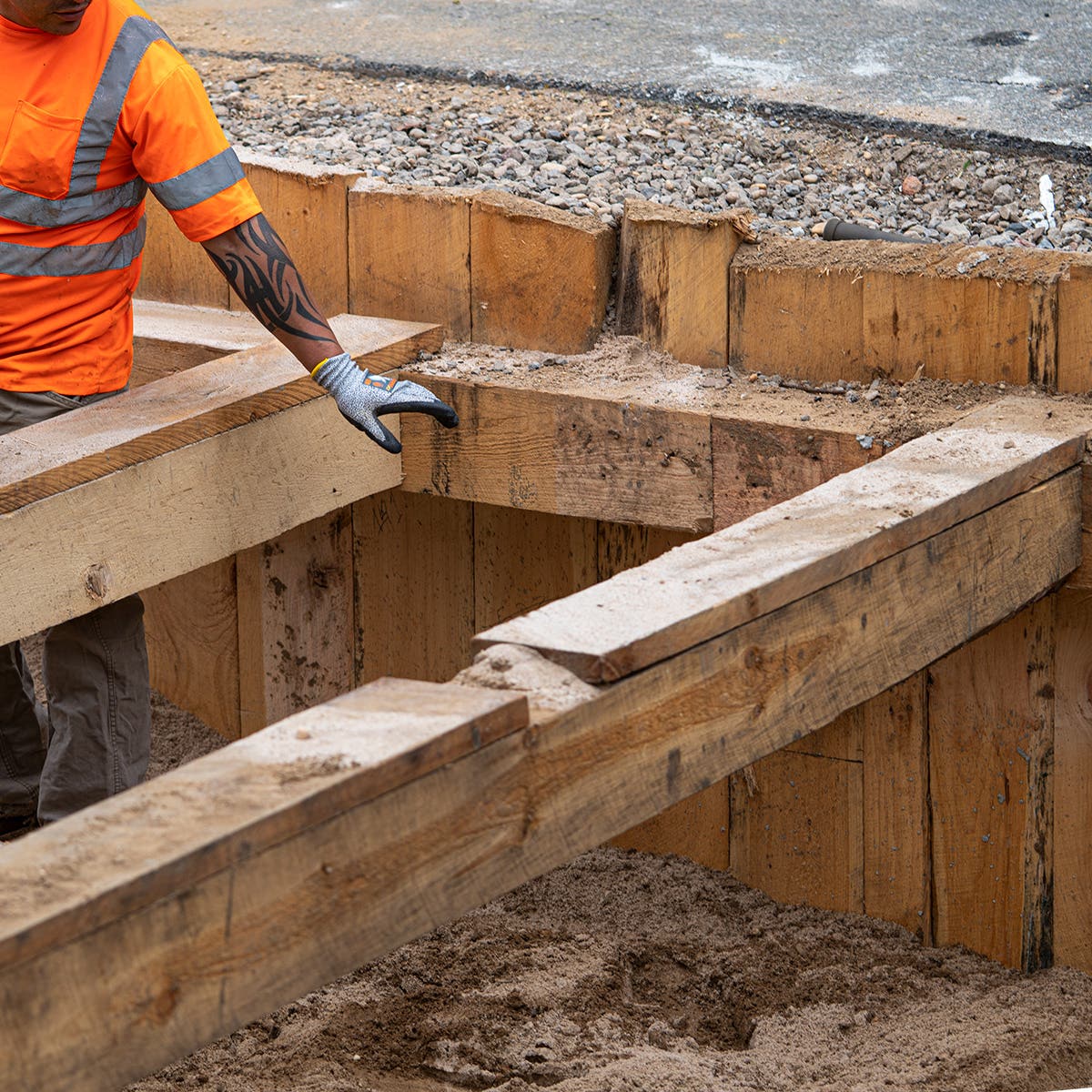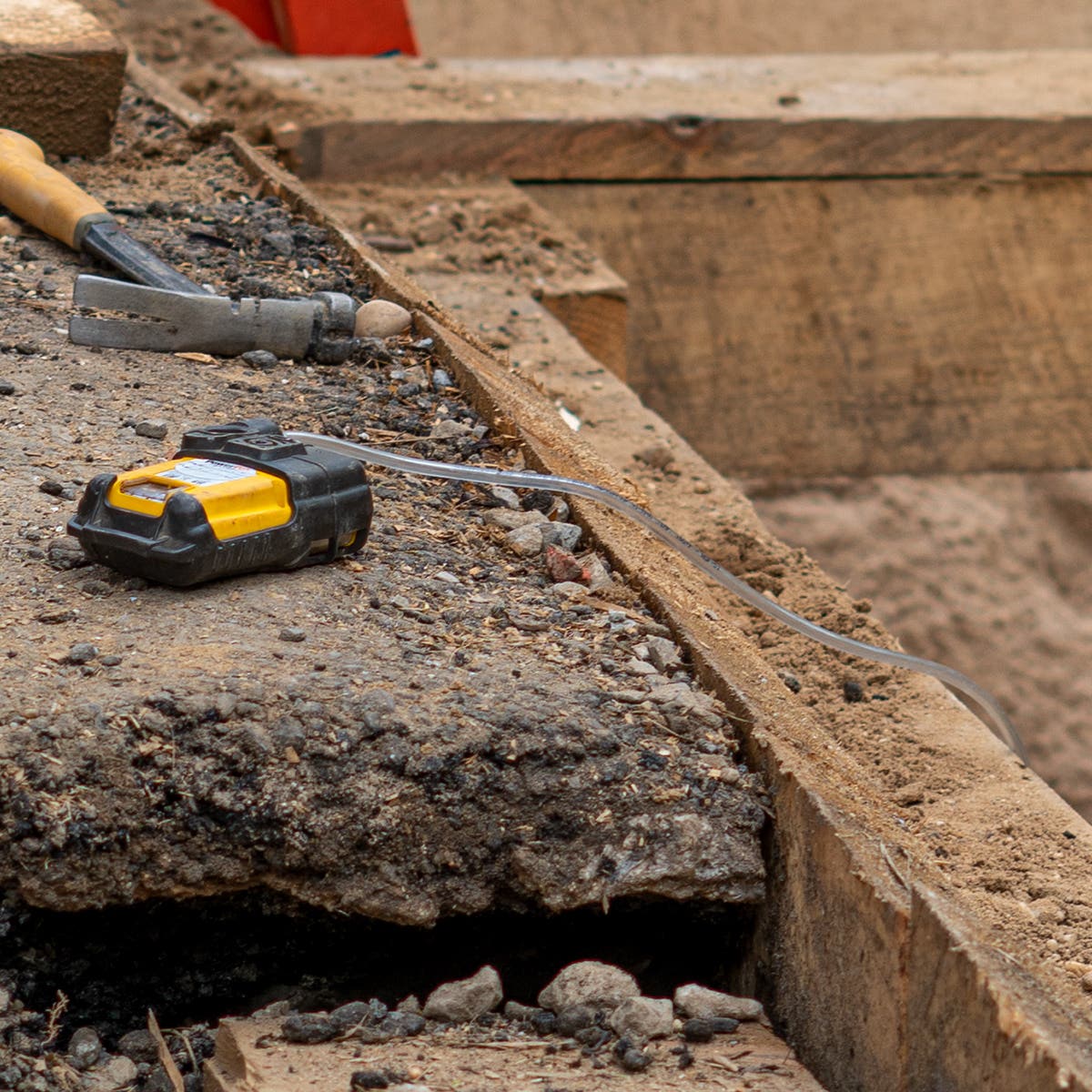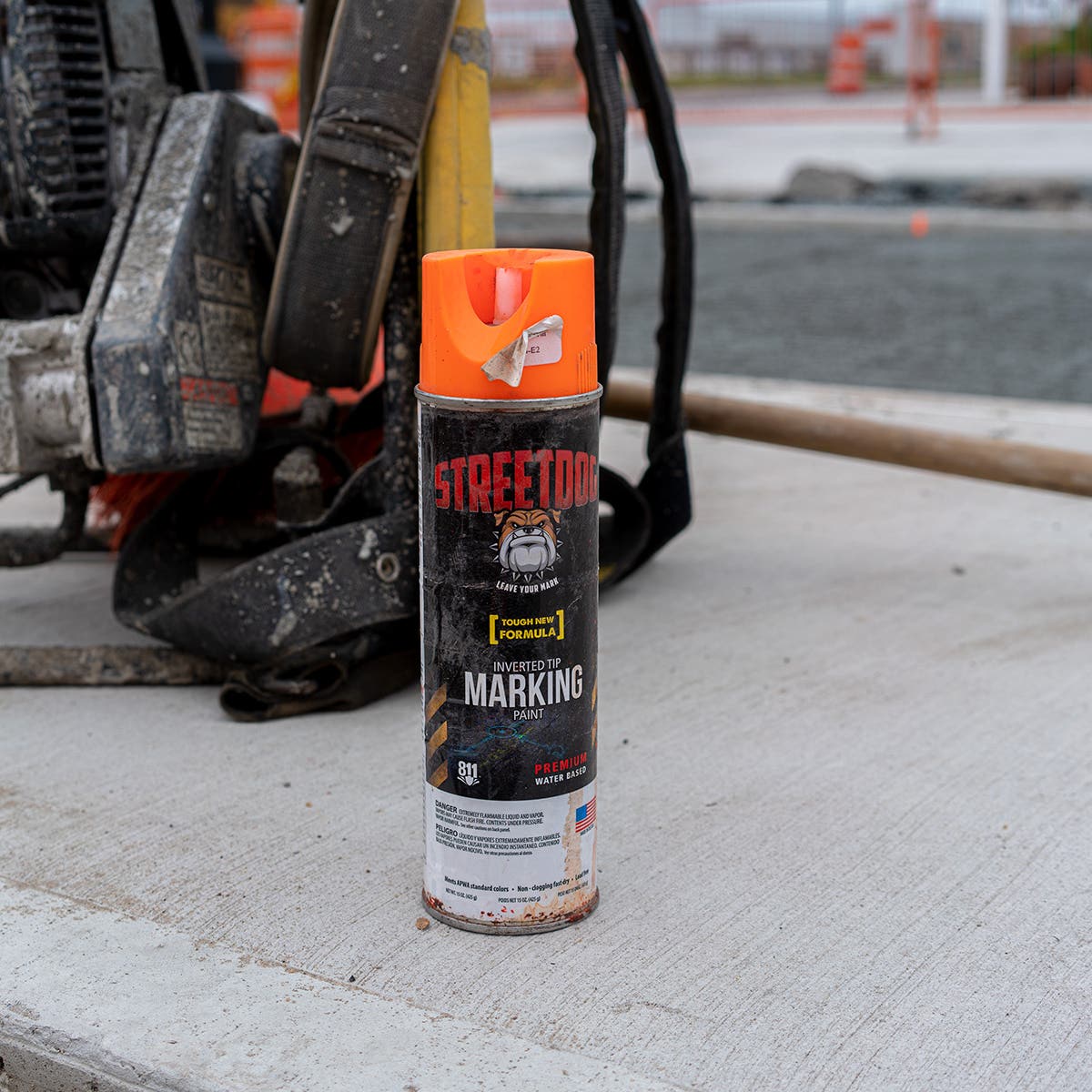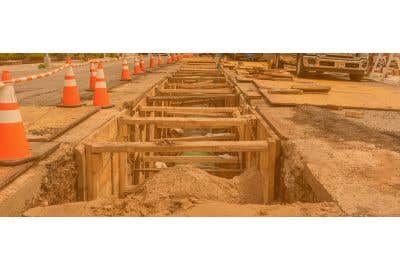*Disclaimer*
The information contained on this page is for promotional and informational purposes only. All equipment should be used by trained professional tradesmen who have been trained how to use the equipment described on this page, and understand the risks of their work. PowerPak assumes no responsibility for errors or omissions in the use or misuse of any product purchased. In no event shall PowerPak be liable for any direct, special, indirect, consequential, or incidental damages or any damages whatsoever, whether in an action of contract, negligence or other torts, arising out of or in connection with the use of this information or the contents of this page. PowerPak reserves the right to make additions, deletions, or modifications to the contents on this page at any time without prior notice.
Sloping, shoring, and shielding. If one of these three engineered solutions were always implemented on hazardous trenches, we probably wouldn’t be talking about this right now, and they're certainly wouldn't be a need for Trench Safety Week.
Trench safety is a frequent topic of discussion because hazardous trenches around the country fail, collapse, or trap workers. These accidents are preventable by following OSHA guidelines and implementing common-sense measures and procedures. We will dive into some basics around trench safety, but when digging or working in or around trenches, be sure to seek out the proper training and equipment.
Trench Hazards
Hazard assessment is the first step in any safety plan. Understand what the hazards are and what causes them, then you can implement a plan to prevent the hazards from harming workers.
Cave-Ins
The most obvious and most talked about trench hazard is cave-ins. Cave-ins are highly probable in an ill managed trench. When you dig a trench, you aren’t just displacing the dirt from inside the trench. You are also disrupting the surrounding ground. As heavy machinery and workers work around the trench, the surrounding ground becomes more and more disturbed until the walls of the trench cave in.
The ground is self-leveling, and it doesn't care if you are in its way. If you are in an unsecured trench, it's not a matter of "if" a cave-in will occur. It's a matter of "when."
Drops, Falls, and Slips
Apart from a cave-in, workers can be injured by equipment that accidentally falls into the trench, or they could fall into the trench when entering, exiting, or working in the surrounding area.
Atmospheric Hazards
Utility lines in trenches pose additional hazards. A cracked utility line could fill the trench with low-sitting toxic gases, or the trench can rapidly fill with water or sewage, not giving workers enough time to exit.
All of these hazards escalate quickly and without warning. Workers caught in these hazards have little to no chance of escaping.
Before Trenching
Before any trench excavating can begin, a few things need to be implemented. The first is considered one of the most important steps because it determines how safely everything else will be done. The company conducting the excavation needs to appoint a “competent person” to overlook the safety aspects of the trench operation.
Competent Person
The assignment of a competent person is an OSHA requirement. It sounds like a broad term, but a qualified, competent person has OSHA training and has the experience, resources, and ability to identify and prevent hazards before workers are exposed. This role involves frequent and detailed inspections of worksite conditions, including soil quality, weather conditions, and other external factors.
Utility Marking
The rules on excavating are simple. Before a shovel even touches the ground, all of the utilities need to be properly marked. A common train of thought is, “there aren’t any utilities running through here," or “we aren’t digging that deep," or “we’ll stop if we feel something."
That is a very poor way of operating and will eventually result in a disaster. Just don’t do it. Call 811, and get the utilities marked. It takes a little time, but it’s well worth the wait.
Signage and Barricades
If you are planning on digging a hole in the ground, whether it is 2ft or 20ft, it is in everyone's best interest to label it, warn people, and if it's deep enough, block it off with barricades or temporary fencing.
The 2-3-4-5 Rule
The rule to follow when working in or around trenches is 2-3-4-5. The 2-3-4-5 rules break down much of what you need to know about trench safety.
Two Feet
The two-foot rule requires a minimum of two feet clearance around the edge of the trench. That means no tools, no stockpiles, no equipment, and no loitering. The goal of this rule is to prevent accidental fall-ins. Small objects can cause serious harm or damage when dropped on a worker from 20+ feet.
There is another two-foot rule that prohibits excavation beyond two feet below the bottom of the shoring system. We’ll discuss shoring systems later.
Three Feet
Ladders must extend three feet past the top of the trench. This rule comes down to basic ladder safety and can be applied whenever an extension ladder is used. A ladder must extend sufficient distance past the point where you will dismount so that the worker has something to hold on to when transitioning. The rule is a minimum of 3 feet.
Four Feet
The four-foot rule requires the use of ladders or aid for any trench 4 feet or deeper. This could include ramps, stairs, or lifts; the point is that workers aren't trying to hoist themselves out of trenches that are deeper than four feet, which would be especially problematic in an emergency.
Five Feet
Any trench that is deeper than five feet requires engineered protection from cave-ins. This is where those three S’s come in (sloping, shoring, and shielding).
- Sloping is the act of excavating a wide, sloped edge into a trench rather than a steep vertical wall. Sloping requires a larger excavation area but is a very effective method on high-risk terrains, such as with poor quality ground that is at a high risk of a cave-in. OSHA has regulations on the maximum slope angle, depending on the depth.
- Benching, similar to sloping, is also utilized in high-risk conditions. Benching is the same concept as sloping, but instead of a flat, sloped surface, you dig a series of treads and rises, similar to stairs.
- Shoring is an engineered solution for stabilizing the trench walls. There are a few different shoring systems, but they all usually consist of wall plates being pushed against the trench walls with pressurized jacks. The jacks are installed between two walls and then pressurized, pushing the plates outwards. Common jack systems include hydraulic, pneumatic, or mechanical pressure.
- Shielding is a term sometimes used in place of shoring, but shielding is a separate protection method. Unlike shoring, shielding does not stabilize the trench walls. Shielding usually comes in the form of a trench box. After the trench is dug out, a preconstructed trench box is placed inside, and the box shields the workers if the walls collapse. For larger projects, trench boxes can be assembled inside the trench rather than using a preconstructed box.




Although trenches fit the definition of a permit-required confined space, OSHA does not require a confined space permitting process to enter a trench. Regardless, some of the same safety precautions need to be taken.
Pre-entry atmosphere tests are one of the most important and often rushed safety measures for both trenches and confined spaces. Even if a trench looks fine to enter, you should always properly test for hazardous atmosphere.
This process requires the use of a multi-gas monitor with a pump. Workers often gloss over the testing process. In summation, you need to drop the hose to the bottom of the trench, wait 30 seconds plus 2-3 seconds for every foot of the hose, then pull the hose up 4 feet and retest. You repeat the test every 4 feet until you are out of the trench.
Workers often do not give the monitor enough time to register a reading. We’ve received calls from crew members telling us that their monitor is malfunctioning because it is alarming while sitting on the pavement in the open air. The monitor was not malfuctioning. The air finally reached the sensor and the monitor registered a toxic atmosphere reading.
A general rule of thumb is that you probably didn't do the test correctly if it took less than a minute.
PowerPak Selection
PowerPak offers a wide selection of products that are used in trench work.
StreetDog utility marking paint is PowerPak’s brand of marking paint. Pick up some cans of white to plot out your trenching plans.
Trench signage is a must.
Our entire category of barricades gives you options for any trench size.
Ladders in various lengths and materials and accessories.
Continuous and internal pump gas detectors and accessories.
Visit PowerPak.net to explore all of our safety products.
Trench Safety
This article was drafted to give a bird’s eye view of trench safety and should not be used in place of certified training. A lot of the preventive measures mentioned above are simple and can be implemented immediately, but other measures require time and resources to put in place. Understanding the scope of the safety measures needed is a good start.


Over the years, trench safety has become a focal point for OSHA and the construction industry. Each year the industry recognizes Trench Safety Week in June and, by extension, Trench Safety Month. Awareness that this is not an acceptable issue is spreading quickly, and stricter regulations and penalties are likely on the horizon if a drastic decrease in injuries and death isn't seen in the upcoming years.
Beyond that, trench safety, just like any other safety, is about the workers. If you already follow trench safety regulations, help spread the word by sharing this article and conducting a Trench Safety Stand-Down with your team.







